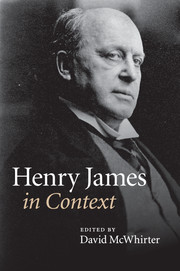Book contents
- Frontmatter
- Contents
- List of Illustrations
- Notes on Contributors
- Preface
- Abbreviations
- Chronology
- Part One Life and career, times and places
- Part Two Historical and cultural contexts
- Chapter 9 Aestheticism and Decadence
- Chapter 10 Authorship
- Chapter 11 Children
- Chapter 12 Consumer culture
- Chapter 13 Cosmopolitanism
- Chapter 14 Courtship, marriage, family
- Chapter 15 Ethics
- Chapter 16 Language
- Chapter 17 Law
- Chapter 18 Manners
- Chapter 19 Media and communication technologies
- Chapter 20 Modernism
- Chapter 21 Money and class
- Chapter 22 Museums and exhibitions
- Chapter 23 Nationalism and imperialism
- Chapter 24 Print culture
- Chapter 25 Psychology
- Chapter 26 Race
- Chapter 27 Realism and naturalism
- Chapter 28 Sexualities and sexology
- Chapter 29 Social sciences and the disciplines
- Chapter 30 Things
- Chapter 31 Time
- Chapter 32 Travel and tourism
- Chapter 33 Urbanity
- Chapter 34 Visual culture
- Chapter 35 Women and men
- Chapter 36 Work
- Part Three Reception
- Further reading
- Index
- References
Chapter 18 - Manners
Published online by Cambridge University Press: 05 August 2014
- Frontmatter
- Contents
- List of Illustrations
- Notes on Contributors
- Preface
- Abbreviations
- Chronology
- Part One Life and career, times and places
- Part Two Historical and cultural contexts
- Chapter 9 Aestheticism and Decadence
- Chapter 10 Authorship
- Chapter 11 Children
- Chapter 12 Consumer culture
- Chapter 13 Cosmopolitanism
- Chapter 14 Courtship, marriage, family
- Chapter 15 Ethics
- Chapter 16 Language
- Chapter 17 Law
- Chapter 18 Manners
- Chapter 19 Media and communication technologies
- Chapter 20 Modernism
- Chapter 21 Money and class
- Chapter 22 Museums and exhibitions
- Chapter 23 Nationalism and imperialism
- Chapter 24 Print culture
- Chapter 25 Psychology
- Chapter 26 Race
- Chapter 27 Realism and naturalism
- Chapter 28 Sexualities and sexology
- Chapter 29 Social sciences and the disciplines
- Chapter 30 Things
- Chapter 31 Time
- Chapter 32 Travel and tourism
- Chapter 33 Urbanity
- Chapter 34 Visual culture
- Chapter 35 Women and men
- Chapter 36 Work
- Part Three Reception
- Further reading
- Index
- References
Summary
The near ubiquity of reference to Henry James as a novelist of manners exists in relation to this complication: that James himself, it has been suggested, may have invented the term, using it as a lesser alternative to ‘master-piece’ in his 1866 review of Felix Holt, the Radical. George Eliot’s novels, James suggests, exemplify ‘a kind of writing in which the English tongue has the good fortune to abound – that clever, voluble, bright-colored novel of manners which began with the present century under the auspices of Miss Edgeworth and Miss Austen’ (LC-1, 911). What works best in James’s definition of this kind of writing (certainly better, in being more usefully indicative, than ‘clever’ or ‘bright-colored’) is his location of it under the signatures of Maria Edgeworth and Jane Austen, and subsequent critics of the novel have followed his lead, pinpointing that location more closely by triangulating the novels of Austen and Edgeworth with the works of Henry James. If critics tend less frequently to define the novel of manners than to know it when they see it, then they see it when they look at James and Austen. The first reason to discuss James in relation to manners, that is, is that so many people already have done so. And it was crucially a part of James’s task in writing (as it was of Austen’s and of Edgeworth’s) to attend to the daily practices and mores that constitute social relations and social structures as they are lived and experienced – in short, to attend to manners.
- Type
- Chapter
- Information
- Henry James in Context , pp. 192 - 202Publisher: Cambridge University PressPrint publication year: 2010

